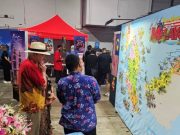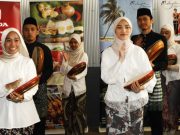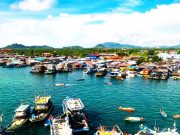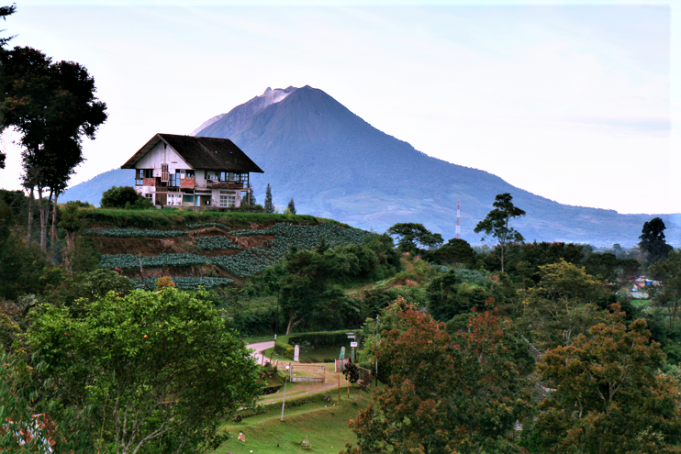By Mel Fernandez
BERASTAGI, INDONESIA – In the heart of the Bukit Barisan Range of North Sumatra, 1,400m (4,200ft) above sea level, lies Berastagi – a green pine valley encircled by lofty mountains. Once a Dutch hill station, it is a stunning location and since the 1920s it has been one of the most popular holiday resorts among the people of North Sumatra.
Until recently it was relatively untouched by international tourism and lived in the shadow of neighbouring Lake Toba. The reason for this was the dire shortage of hotel rooms. A few decades ago it only offered a small number of Dutch style holiday bungalows and rest-houses that were huddled together in the valley. The best accommodation in town was at the Bukit Kubu Rest-house. It boasted 15 double rooms with baths.
Today the Sinabung Hill Resort has 52 resort and hotel rooms, 29 cottages and a further 77 rooms, swimming pools, a coffee house, a dining room, a lounge and grill with a choice of cuisine – Chinese, Western, Malaysian and Indonesian – and 24-hour room service. A superior double room here is priced from $99.
Then there are more 4-star properties – including the grand Mutiara Hotel with 123 rooms and the modern Hotel Sibayak Internasional and an array of other accommodation to suit every budget.
Thankfully, the smaller character hotels, holiday bungalows and rest-houses of yesteryear, with room rates as low as $20, still exist cheek to jowl with the more updated properties.
You can fly to Medan, the capital city of North Sumatra, from Kuala Lumpur for around $355. From their base in Parapat (Lake Toba), tourists on package tours make a brief stopover in Berastagi on their journey home via Medan. Sadly, visitors who breeze through the town miss out on discovering the charms of this lovely destination.
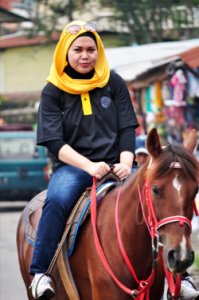
The sun shines warmly over the valley at noon, but for the best part of the day the cool mountain breeze predominates and although it is three degrees to the north of the Equator Berastagi has a comfortably cool climate throughout the year.
At nightfall, the temperature in the valley drops even lower than that experienced in Lake Toba, so warm clothing is a must here.
After dark visitors can check out the many restaurants around town. A brisk walk in the cold night air to ‘Restoran Asia’ along the main street is worth the chill. It is one of the oldest restaurants, serving a wide variety of piping hot Chinese and Indonesian dishes.
The Karonese who inhabit the 274 villages in the valley retain their traditional customs and lifestyle and except for the few villages which are visited daily by a tourist bus or by occasional sightseers, most villages in the valley remain as they have been for hundreds of years.
Some of the houses and buildings in Lingga village were built about 200 years ago. The architectural design of these buildings is unique – they have high roofs and not a single nail was used in the construction.
All week long the Karonese move unhurriedly in their fields and things are similarly slow moving in town. But on market days – Wednesdays and Saturdays – the women trail into town with their wares – jumbo-sized fruits and vegetables, lush flowers, beautifully threaded native cloth and piglings.
This is a good chance for the visitor to meet the Karonese and to learn something of their traditional culture in the villages.
A treat you cannot miss at the market stalls is the Marqeesha. A fruit famed throughout Indonesia for its delicious taste and grown exclusively in Berastagi, the juice of this fruit makes a refreshing drink.
During the weekends a transformation takes place in town. The valley comes alive as a steady stream of holidaymakers from Medan and other neighbouring towns pour into town.
The town is a hive of activity and the work horses and ponies from the farms are led into town to draw carts or for pony rides. Business is also brisk at the makeshift stalls that spring up all over the place selling fruits and vegetables.
There’s much to do in Berastagi. You can go nature walking. Have great fun riding ponies. Swing a golf club over a nine-hole course. Swim in the pools. Or go for an exciting drive up Goondaling – a steep hill on the fringe of the town.
The view from the top of Goondaling is breath-taking. On both sides of the valley are two live volcanoes – Sibayak (2095m/6285ft) and Sinabung (2451m/7353ft) – spewing out smoke and steam.
It is possible to climb up Mt. Sibayak to look at its bubbling crater. From the top of the volcano you can see miles of fertile rice fields stretching out on all sides.
There are quite a few places to visit out of town as well. The majestic Sikulikap Waterfall is about 13 km away.
Another popular spot is the Lau Sidebuk Debuk hot springs (‘luminous supernatural spring’). Here you can take curative baths in the sulphuric waters of the hot spring.
Other tourist attractions are: The Puzzling House – an underground maze built by the Dutch.
The Bamboo House – a model house built solely from strips of bamboo.
And the majestic Sipiso-piso Falls.
You can also go on a tour to Lingga village to witness traditional folk dances and to Pemating Purba to look over the Batak King’s longhouse.
To get to Berastagi your first stop is Medan. From here you can take a coach directly to Parapat and after a few days at Lake Toba you can drive to Berastagi.
The road to Berastagi leads through forests, across plains and winds along a high rim of mountains. It is a very relaxing drive and it prepares you for the lazy days ahead in Berastagi.


